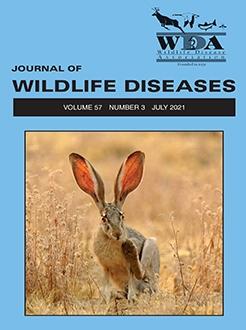Recent sarcoptic mange epizootics have affected free-ranging black bears (Ursus americanus) in the northeastern US, but not in North Carolina. To determine whether black bears in eastern North Carolina have exposure to Sarcoptes scabiei, serum samples from hunter-harvested black bears (n=45) were collected and evaluated for antibodies using a commercial enzyme-linked immunosorbent assay previously validated in black bears. No dermal lesions consistent with sarcoptic mange were identified in the sampled bears. The seroprevalence among these asymptomatic bears was 18%, with no significant difference between sexes or association with age. This suggests that exposure to Sarcoptes scabiei occurs within the population, and highlights the importance of serosurveys in regions without a history of clinical mange.
How to translate text using browser tools
5 July 2021
Seroprevalence of Sarcoptes scabiei in Free-Ranging Black Bears (Ursus americanus) in Eastern North Carolina, USA
Emma Houck,
Colleen Olfenbuttel,
Michael Stoskopf,
Suzanne Kennedy-Stoskopf
ACCESS THE FULL ARTICLE

Journal of Wildlife Diseases
Vol. 57 • No. 3
July 2021
Vol. 57 • No. 3
July 2021
black bear
Sarcoptes scabiei
sarcoptic mange
serology
ursid
Ursus americanus




